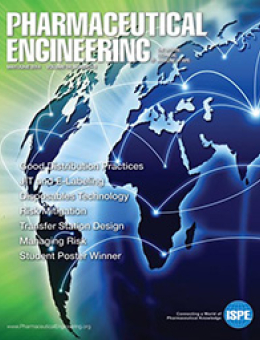
Downloads
A Changing Landscape: Perspectives on Temperature Management for the Distribution of Non-Refrigerated Clinical Supplies Description
by Dr. Nicole Assfalg, Ted Bradley, Tim Brewer, Sébastien Delporte, Kristen DeVito, Bruce Guenter, and Patricia Thomas
This article discusses the shipment of room temperature products from several perspectives: the changing regulatory environment, risk assessment and mitigation, new technologies and budgetary pressures.
Patient Centric Innovations in the Clinical Supply Chain
by Karen Gram, Hans Heesakkers, Roger Lauwers, and Sascha Sonnenberg
This article discusses the use of Just in Time (JIT) and E-labeling to minimize supply chain problems and increase the safety of subjects in a clinical trial.
Change Notifications for Single Use Components: Criteria from an End User Perspective
by Sally Kline, Ekta Mahajan, Darrell Morrow, Bob Steininger, Nancy Sweeney, and Russell Wong*
*All authors contributed equally to this article.
This article presents science and risk-based approaches to categorize levels of changes in Single Use Systems (SUS) raw material and manufacturing processes.
How Does Strategic Planning Help to Mitigate Risks in the Pharmaceutical Supply Chain
by Agnes Trouchaud
This article presents the implementation of a key strategic planning process to mitigate risks in GSK’s API supply chain; it was adapted from an ISPE France presentation held in June 2013.
How Does Strategic Planning Help to Mitigate Risks in the Pharmaceutical Supply Chain - Diagram
by Agnes Trouchaud
Transfer Station Design for Large Scale API Manufacture (Part One)
by Joseph R. Hettenbach, PE
This article presents Part One of a two part article describing the background bases and philosophies applied to the development of detailed layout of process manifold rooms and of the process service rooms.
Defining Holistic Asset Criticality to Manage Risk
by David J. Mierau, PE, CMRP
This article presents how risks to safety, quality and productivity can be managed through asset control strategies, which are created based on specific asset criticality and failure modes.
To Investigate the Antimicrobial Potential of Lucilia sericata Larvae
by Qin Xiang Ng
This article presents a research project that investigates the antimicrobial effects of excretions/secretions and gas flatulence produced by Lucilia sericata larvae on Escherichia coli, Staphylococcus epidermidis, and Micrococcus luteus. It was presented at the 2013 ISPE Annual Meeting as part of the student poster competition.